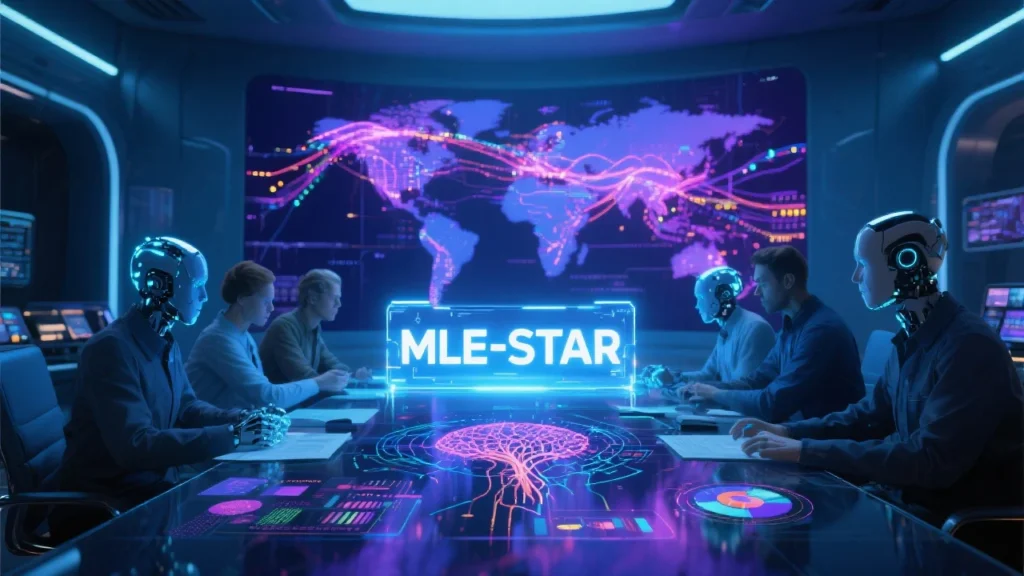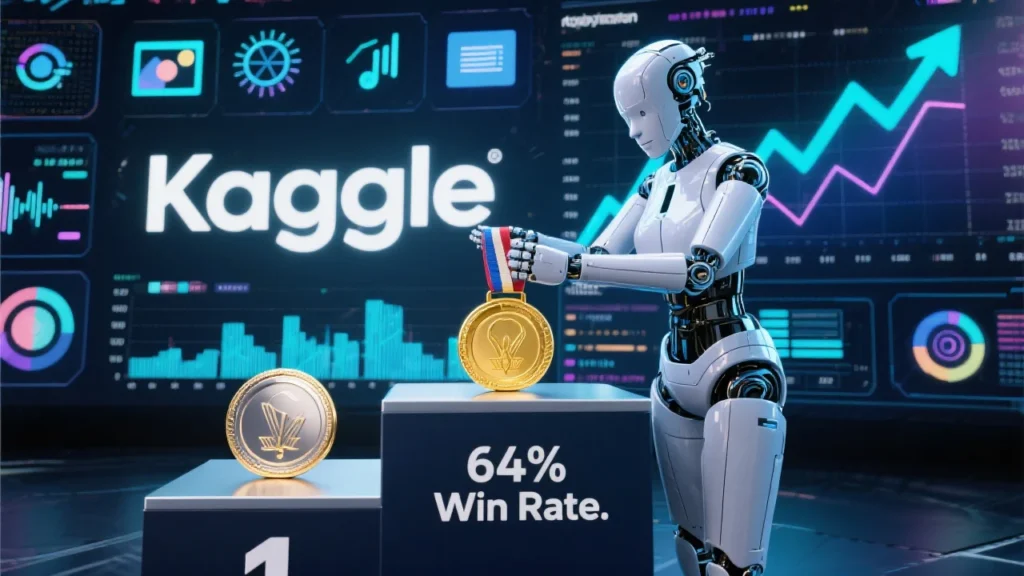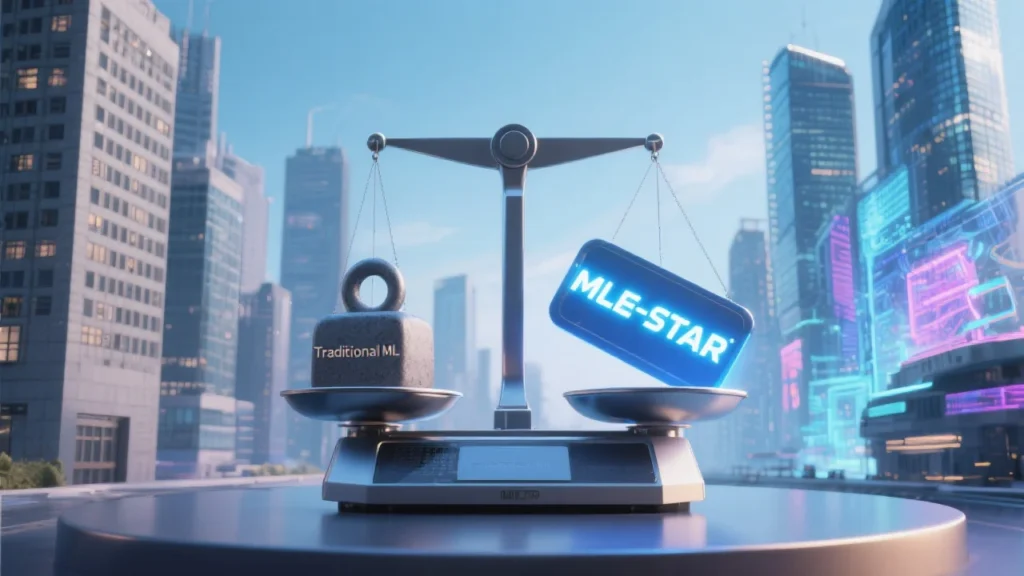The artificial intelligence landscape just witnessed a seismic shift. Google AI has unveiled MLE-STAR, a groundbreaking machine learning engineering agent that’s redefining how we approach AI development. This isn’t just another incremental improvement it’s a complete paradigm shift that could democratize machine learning for everyone.

The Problem That Needed Solving
Machine learning engineering has always been a complex beast. Data scientists spend countless hours crafting models, tweaking parameters, and wrestling with code. The process demands extensive iterative experimentation and data engineering expertise that many organizations simply don’t have.
Traditional approaches relied heavily on human intuition and manual labor. Engineers would spend weeks testing different models, adjusting features, and optimizing performance. This bottleneck has prevented many companies from fully leveraging AI’s potential.
Existing machine learning engineering agents tried to solve this problem but fell short. They suffered from two critical limitations that MLE-STAR addresses head-on.
Breaking Free from Old Limitations
Previous MLE agents had a fundamental flaw they were prisoners of their own training data. These systems would default to familiar tools like scikit-learn for tabular data, completely missing potentially superior task-specific approaches available in the broader ecosystem.
The second major issue was their shallow exploration strategy. Most solutions attempted to modify entire code structures in one go. This led to premature decisions and missed opportunities for deep, iterative improvements within specific pipeline components.
Google’s research team recognized these limitations and set out to build something revolutionary.
Enter MLE-STAR: The Game Changer
MLE-STAR stands for Machine Learning Engineering Agent via Search and Targeted Refinement. The name perfectly captures its innovative approach it searches the web for cutting-edge models and then refines them with surgical precision.
Unlike its predecessors, MLE-STAR doesn’t rely solely on internal knowledge. Instead, it actively searches the internet to find state-of-the-art models and techniques relevant to specific tasks. This external knowledge integration ensures the agent stays current with the latest developments in machine learning.
The system’s architecture revolves around three core pillars that work in harmony to deliver exceptional results.
The Three Pillars of Excellence
Web Search-Driven Model Retrieval forms the foundation of MLE-STAR’s approach. Rather than being limited by pre-trained knowledge, the agent uses Google Search to discover relevant models and example code. This external data forms the backbone of its initial solution, helping overcome LLM biases and knowledge gaps.
Targeted Component-Wise Refinement represents the system’s most innovative feature. MLE-STAR employs a nested-loop strategy that first identifies which code block has the most significant impact on performance through automated ablation studies. Once identified, the agent generates iterative improvement plans and implements them systematically.
Novel Ensembling Strategies complete the trinity. Instead of simply picking the best single script, MLE-STAR automatically proposes multiple promising solutions and explores ways to combine them effectively. The agent iteratively generates and tests ensemble strategies, adapting its approach based on validation performance.
Robustness Through Smart Engineering
MLE-STAR incorporates three additional modules that address common pitfalls in LLM-generated machine learning code. These robustness features set it apart from competitors and ensure reliable performance.
The Debugging Agent automatically identifies and corrects errors in generated code through an iterative process. When code fails, this module springs into action, analyzing error messages and implementing fixes without human intervention.
The Data Leakage Checker prevents a critical mistake that could invalidate results. This module inspects code to ensure no information from test datasets accidentally leaks into training data preparation, maintaining the integrity of model validation.
The Data Usage Checker ensures comprehensive utilization of provided data sources. Many LLM-generated scripts focus only on simple formats like CSVs, overlooking auxiliary files that could improve performance. This checker identifies and incorporates previously neglected data.
Unprecedented Performance Results

The proof is in the pudding, and MLE-STAR’s performance is nothing short of spectacular. Testing on the MLE-bench Lite suite comprising 22 real Kaggle competitions across various machine learning problem types revealed remarkable results.
MLE-STAR achieved medals in 64% of Kaggle competitions, a dramatic leap from the previous best performance of 26%. This represents more than a doubling of success rates, with 36% of those medals being gold the highest achievement level.
The agent’s performance remained robust across different data modalities, including image processing, audio analysis, and sequence-to-sequence text tasks. This versatility demonstrates MLE-STAR’s broad applicability across diverse machine learning challenges.
What Makes MLE-STAR Special
The system’s ability to propose cutting-edge models sets it apart dramatically from existing solutions. While baseline systems like AIDE typically default to outdated models like ResNet (released in 2015), MLE-STAR consistently identifies and implements more recent, competitive architectures like EfficientNet or Vision Transformers.
This preference for modern approaches stems directly from its web search capabilities. By accessing current online resources, MLE-STAR stays ahead of the curve, automatically incorporating the latest advances in machine learning research.
The agent’s ablation-driven focus ensures that the most impactful pipeline components receive attention first. This strategic approach leads to steeper performance gains in early refinement stages, maximizing efficiency and results.
Human-AI Collaboration Made Easy
One of MLE-STAR’s most impressive features is its seamless integration with human expertise. The system readily accepts manual guidance when experts want to direct it toward specific cutting-edge architectures not yet well-documented online.
For instance, researchers demonstrated how MLE-STAR successfully integrated RealMLP training code based on a simple manual model description. This flexibility allows organizations to leverage both automated capabilities and human domain knowledge effectively.
The solutions generated by MLE-STAR are judged novel compared to top Kaggle discussions, reducing concerns about direct data contamination from training on public forums. This originality ensures that the agent contributes genuine innovation rather than simply recycling existing solutions.
Real-World Impact and Applications
MLE-STAR’s implications extend far beyond academic benchmarks. By automating complex machine learning tasks, the system could significantly lower barriers to entry for individuals and organizations seeking to leverage AI technology.
Small businesses without dedicated data science teams could suddenly access enterprise-level machine learning capabilities. Researchers could accelerate their projects by automating routine optimization tasks. Educational institutions could provide students with powerful tools for learning advanced machine learning concepts.
The system’s inherent adaptability ensures continuous improvement as the field advances. Since MLE-STAR leverages web search to retrieve effective models, its performance automatically improves as new research becomes available online.
Looking Toward the Future
Google has made MLE-STAR’s open-source codebase available through the Agent Development Kit (ADK), enabling developers and researchers worldwide to accelerate their machine learning projects.
This open approach could spark a new wave of innovation in automated machine learning. As more researchers contribute to and build upon MLE-STAR’s foundation, we can expect even more sophisticated capabilities to emerge.
The system represents a significant step toward truly autonomous machine learning engineering. While current implementations require minimal human oversight, future versions might achieve complete independence in many scenarios.
Addressing Potential Concerns
Like any powerful technology, MLE-STAR raises important considerations. The system’s reliance on web search introduces potential data contamination risks, since Kaggle competitions are publicly available and might have influenced LLM training data.
However, the research team has taken steps to ensure all agent-generated solutions remain sufficiently distinct from prominent Kaggle posts. This attention to originality helps maintain the integrity of performance evaluations.
The democratization of advanced machine learning capabilities also raises questions about the future role of human data scientists. Rather than replacement, MLE-STAR seems positioned to augment human capabilities, handling routine optimization while freeing experts to focus on higher-level strategic decisions.
The Bottom Line

MLE-STAR represents a watershed moment in machine learning automation. By combining web search capabilities with targeted refinement strategies, Google has created a system that significantly outperforms existing alternatives while remaining accessible to non-experts.
The agent’s success in Kaggle competitions achieving medals in nearly two-thirds of challenges demonstrates its practical effectiveness. More importantly, its modular design and robust safeguards suggest it’s ready for real-world deployment.
As organizations worldwide grapple with the challenge of implementing AI solutions, MLE-STAR offers a compelling path forward. It bridges the gap between cutting-edge research and practical application, making advanced machine learning accessible to a broader audience than ever before.
The future of machine learning engineering has arrived, and it’s more automated, more intelligent, and more accessible than we ever imagined.
Sources
- Google Research Blog: MLE-STAR: A state-of-the-art machine learning engineering agent
- arXiv Paper: MLE-STAR: Machine Learning Engineering Agent via Search and Targeted Refinement
- Medium: MLE-STAR: A Deep Dive into Machine Learning Engineering with Search and Targeted Refinement
- MarkTechPost: Google AI Releases MLE-STAR










Comments 2